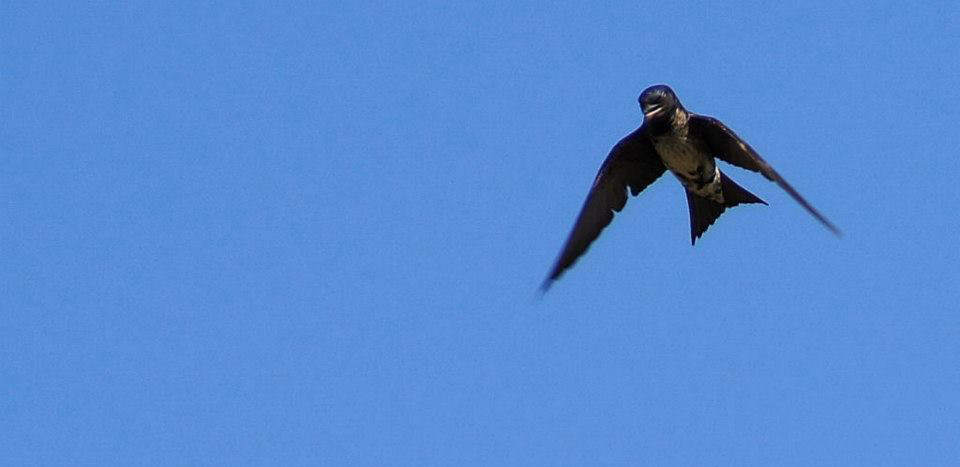While this if-you-don’t-like-the-weather-wait-a-minute pattern of temperatures that has taunted Texas for the past couple of weeks can’t make up its mind as to the arrival of spring, the birds already have ― spring migration has begun.
Many species of birds winter in Latin American and nest in North America in the spring. As thousands of college students head south in March, millions of birds make their way north driven by their own urges to select mates. The compulsion to immediately settle down, nest, and raise a family when they arrive at their destination is at least one aspect that distinguishes these two very different spring migrations.
While Purple Martins usually kick-off the season a little earlier than others, beginning in mid-February, spring migration begins in earnest now, early March, when the migrating birds begin pushing across the Gulf of Mexico, a trip of approximately 600 miles, to arrive in Texas. With good weather, the trip will take about 18 hours.
When the weather is not as favorable during spring migration, a phenomenon known as “fallout” may occur. When a strong, fast-moving cold front moves into the Gulf of Mexico, the ensuing wind and rain slows the migrating birds, causing them to quickly use up their energy reserves and forcing them to seek shelter and food as soon as they reach the coast. During a fallout, sometimes thousands of songbirds can be found within just a couple of acres. The birds may remain to feed and regain their energy anywhere from hours to days, often depending on the weather. Once recuperated, they will continue their journey inland.
It is usually the strongest males that arrive first to grab the best territories, often in the same place they nested the year prior. When the females arrive, they typically go for the males occupying the best habitats for raising young. Starting in early March look for Barn Swallows, Northern Parulas, Yellow-throated and Black-and-white Warblers. A little later this month Chimney Swifts, Ruby-throated Hummingbirds, and Black-throated Green Warblers will start appearing, in addition to many others. To learn which birds, and their estimated arrival times, you can anticipate for your region, enature.com has a convenient map and list function here.
Once the male and female hook-up, there is no long engagement or even time to change Facebook relationship status, they must build a nest, incubate eggs, and raise their brood before it’s time to head back to their winter home ― usually in late summer or early fall.
As these little feathered creatures wing their way into Texas, little do they know that their arrival spurs something of an economic boon for the state. Along with thousands of birds, almost just as many birdwatchers flock here making birding one of the fastest growing recreational activities in Texas. Thanks to the plentiful birds, the state’s distinct regions, each with its own variety of bird species, and our (usually) pleasant spring weather, Texas has a reputation for being a “birder’s paradise.”
For many of us, our “birder’s paradise” may be no farther than a walk about the property or even just sitting on the patio with a pair of binoculars. There are also a number of state parks that boast prime birdwatching opportunities like Lost Maples State Natural Area in Vanderpool (near Bandera), where Golden-cheeked Warblers and Black-capped Vireos usually can be found with minimal effort mid-March through July. On the Texas coast, High Island and Bolivar Flats have been made famous with birders as a fallout location. Bird sanctuaries here, maintained by the Houston Audubon Society, have been developed so that tired, stressed out birds enjoy minimal disturbance while offering easy access to hundreds of birders.
For more information on spring bird migration in Texas, check out Bird Migration and Fallout by the Houston Audubon Society, , Top Texas Birding Spots
Migration and the Migratory Birds of Texas: Who They Are and Where They Are Going from Texas Parks and Wildlife.
You can find loads of online information for spring migration, but don’t spend too long looking at your computer screen when the real action is happening outside. Spring really is an exciting time in Texas and it is definitely for the birds.
Purple Martin photo, above, by Melanie Cambron.









